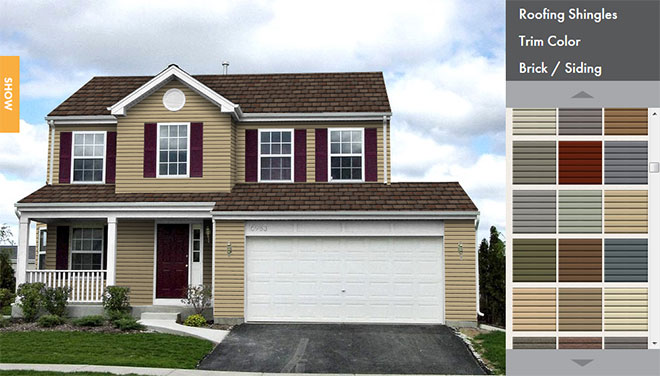Buying a New Roof System Minneapolis MN
Buying a New Roof and Getting Your Money’s Worth
The National Roofing Contractors Association (NRCA) is pleased to provide you with this information as part of our ongoing effort to educate home and building owners about roofing and roofing contractors.
We hope this information will make you a more knowledgeable consumer and, when the time comes, a smart roof system buyer. A new roof system is a big investment. We want to help you get a quality roof system at a fair price from a professional roofing contractor.
Roof System Components
All steep-slope roof systems (i.e., roofs with slopes of 25 percent or more) have five basic components:
- Roof covering: shingles, tile, slate or metal and underlayment that protect the sheathing from weather.
- Sheathing: boards or sheet material that are fastened to roof rafters to cover a house or building.
- Roof structure: rafters and trusses constructed to support the sheathing.
- Flashing: sheet metal or other material installed into a roof system’s various joints and valleys to prevent water seepage.
- Drainage: a roof system’s design features, such as shape, slope and layout that affect its ability to shed water.
Choosing a Roof System
There are a number of factors to consider when selecting a new roof system. Of course, cost and durability head the list, but aesthetics and architectural style are important too. The right roof system for your home or building is one that balances these five considerations. The following roofing products commonly used for steep-slope structures
Asphalt shingles possess an overwhelming share of the U.S. steep-slope roofing market and can be reinforced with organic or fiberglass materials. Although asphalt shingles reinforced with organic felts have been around much longer, fiberglass-reinforced products now dominate the market.
- Organic shingles consist of cellulose-fiber (i.e. wood) base that is saturated with asphalt and coated with colored mineral granules.
- Fiberglass shingles consist of fiberglass mat, top and bottom layers of asphalt, and mineral granules.
Asphalt shingles‘ fire resistances, like most other roofing materials, are categorized by Class A, B or C. Class A signifies the most fire-resistant; Classes B and C denote less fire resistance. Generally, most fiberglass shingles have Class A fire ratings, and most organic shingles have Class C ratings.
A shingle’s reinforcement has little effect on its appearance. Organic and fiberglass products are available in laminated (architectural) grades that offer a textured appearance. Zinc or copper-coated ceramic granules also can be applied to organic or fiberglass products to protect against algae attack, a common problem in warm, humid parts of the United States. Both types of shingles also are available in a variety of colors.
Regardless of their reinforcing type and appearance, asphalt shingles’ physical characteristics vary significantly. When installing asphalt shingles, NRCA recommends use of shingles that comply with American Society for Testing and Materials (ASTM) standards-ASTM D 225 for organic shingles and ASTM D 3462 for fiberglass shingles. These standards govern the composition and physical properties of asphalt shingles; not all asphalt shingles on the market comply with these standards. If a shingle product complies with one of these standards, it is typically noted in the manufacturer’s product literature and on the package wrapper.
Wood shingles and shakes are made from cedar, redwood, southern pine and other woods; their natural look is popular in California, the Northwest and parts of the Midwest. Wood shingles are machine sawn; shakes are handmade and rougher looking. A point to consider: Some local building codes limit the use of wood shingles and shakes because of concerns about fire resistance. Many wood shingles and shakes only have Class C fire ratings or no ratings at all. However, Class A fire ratings are available for certain wood shingle products that incorporate a factory-applied, fire-resistant treatment.
Tile—clay or concrete—is a durable roofing material. Mission and Spanish-style round-topped tiles are used widely in the Southwest and Florida, and flat styles also are available to create French and English looks. Tile is available in a variety of colors and finishes. Tile is heavy. If you are replacing another type of roof system with tile, you will need to verify that the structure can support the load.
Slate is quarried in the United States in Vermont, New York, Pennsylvania and Virginia. It is available in different colors and grades, depending on its origin. Considered virtually indestructible, it is, however, more expensive than other roofing materials. In addition, its application requires special skill and experience. Many old homes, especially in the Northeast, still are protected by this long-lasting roofing material.
Metal, primarily thought of as a low-slope roofing material, has been found to be a roofing alternative for home and building owners with steep-slope roofs. There are two types of metal roofing products: panels and shingles. Numerous metal panel shapes and configurations exist. Metal shingles typically are intended to simulate traditional roof coverings, such as wood shakes, shingles and tile. Apart from metal roofing’s longevity, metal shingles are relatively lightweight, have a greater resistance to adverse weather and can be aesthetically pleasing. Some have Class A fire ratings.
Synthetic roofing products simulate various traditional roof coverings, such as slate and wood shingles and shakes. However, they do not necessarily have the same properties.
Before making a buying decision, NRCA recommends that you look at full-size samples of a proposed product, as well as manufacturers’ brochures. It also is a good idea to visit a building that is roofed with a particular product.
Ventilation and Insulation are Key
One of the most critical factors in roof system durability is proper ventilation. Without it, heat and moisture build up in an attic area and combine to cause rafters and sheathing to rot, shingles to buckle, and insulation to lose its effectiveness.
Therefore, it is important never to block off sources of roof ventilation, such as louvers, ridge vents or soffit vents, even in winter. Proper attic ventilation will help prevent structural damage caused by moisture, increase roofing material life, reduce energy consumption and enhance the comfort level of the rooms below the attic.
In addition to the free flow of air, insulation plays a key role in proper attic ventilation. An ideal attic has:
- A gap-free layer of insulation on the attic floor to protect the house below from heat gain or loss.
- A vapor retarder under the insulation and next to the ceiling to stop moisture from rising into the attic.
- Enough open, vented spaces to allow air to pass in and out freely.
- A minimum of 1 inch between the insulation and roof sheathing.
The requirements for proper attic ventilation may vary greatly, depending on the part of the United States in which a home or building is located, as well as the structure’s conditions, such as exposure to the sun, shade and atmospheric humidity. Nevertheless, the general ventilation formula is based on the length and width of the attic. NRCA recommends a minimum of 1 square foot of free vent area for each 150 square feet of attic floor—with vents placed proportionately at the eaves (e.g., soffits) and at or near the ridge.
Is it Time for a New Roof?
- Curling Shingles: Curling shingles allow rain and snow to get into your property. These shingles may also be damaged by wind easily.
- Missing Granules & Exposed Shingle Mat: Granules are there to protect the asphalt from UV rays and water. If you view worn areas on your shingles your roof is deteriorating. Many times you will discover granule accumulation by your gutter downspouts.
- Broken or Missing Shingles: If they are not on the roof they are not doing their job!.
- Cracked Shingles: Many leaks arise from this condition. Nails that have come loose may contribute to this.
- Interior Water Spots: Notice any interior water spots on your ceiling?
Life Of Roof Quality: Shingle installation can last between 10-25 years. If you notice many properties in your area getting new roofs it is a good idea to have yours evaluated.
Buying a new roof system is an important investment. Before you spend your money, spend time contacting several roofing contractors. You should insist on working with a professional roofing contractor. NRCA wants to assist you in getting the kind of results you expect—a quality roof system at a fair price. All roofing contractors are not alike, and NRCA recommends that you prequalify roofing contractors to get the job done right the first time.
Contact a Minnesota Roofing Contractor for a roof inspection to evaluate your roofs condition.



 Click Here
Click Here Click Here To Use
Click Here To Use